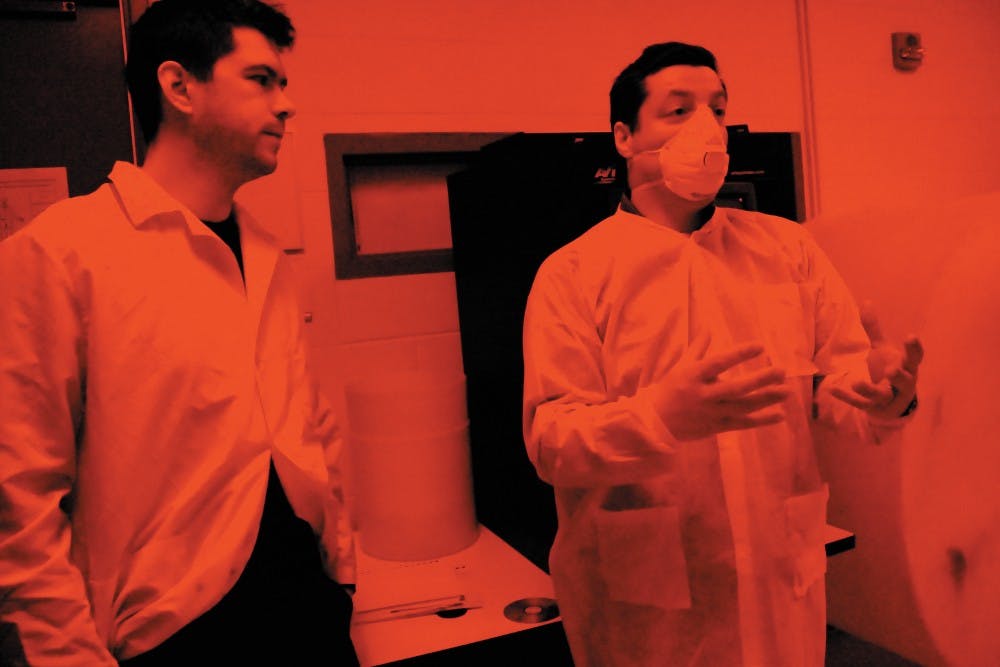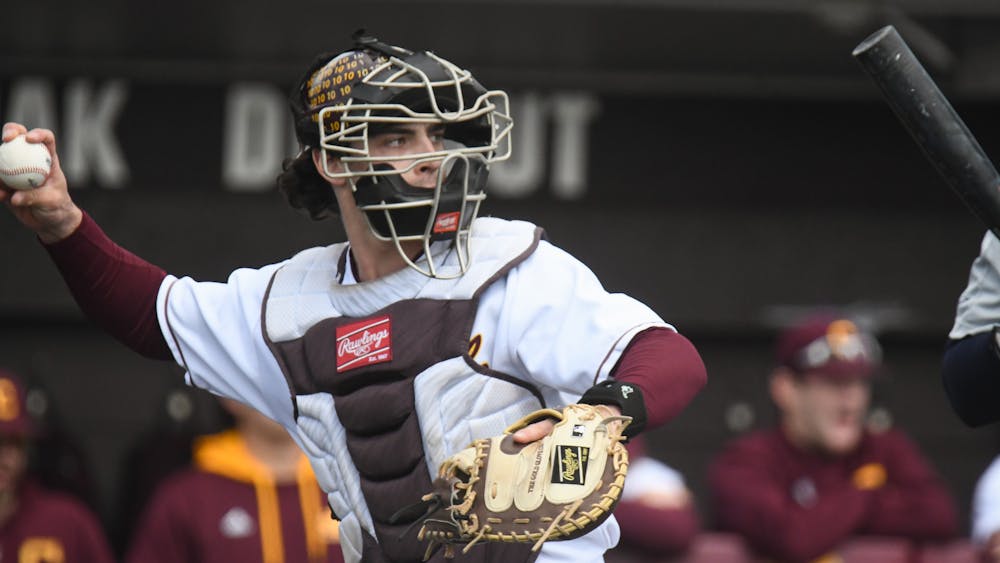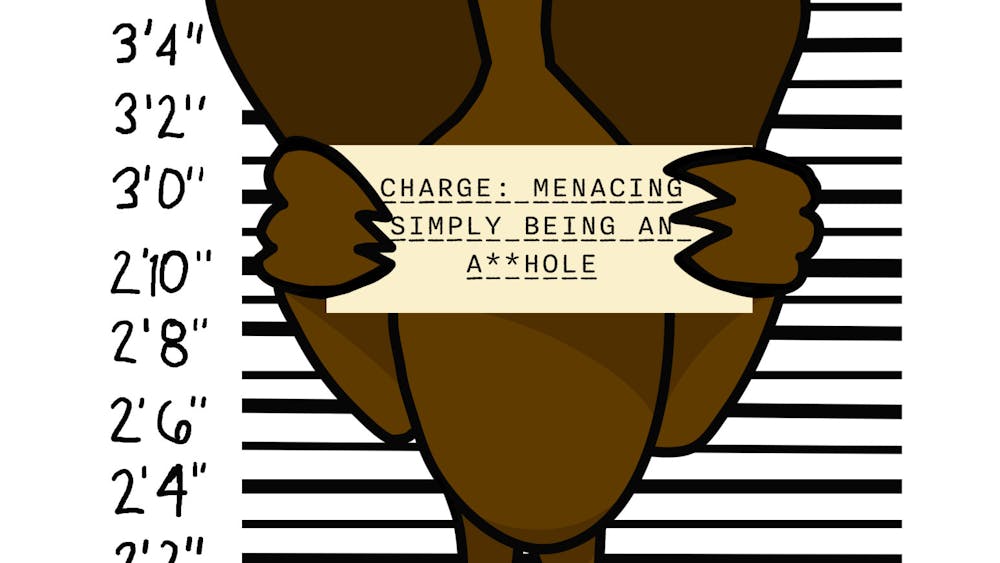Per diems mark transition in animal research at CMU

Julien Rossignol, left, and Yannick Marchalant, right, showcase the different rooms in the animal testing lab while demonstrating the necessity for safety equipment such as lab coats and, for those with allergies, face masks March 20 in the Animal Testing Labs.
The cost of animal research will be partially shifted to faculty under a new per diem policy. At the start of the next fiscal year, faculty will be charged 16 cents daily per cage in the university's vivariums, which are habitats for the animals used for research.
Ian Davison, interim vice president for research, said the policy is a sign of progress in research at Central Michigan University. The funds generated by per diems will be used to expand vivarium lab space to alleviate issues with overcrowding in the labs.
"I think the opportunities for research with students will increase," he said. "We have a commitment as an institution to make sure faculty work and research is connected to the undergraduate experience. By supporting faculty research, we are increasing the educational opportunities for students, who can then work with somebody who is doing work at the forefront of science. That is an invaluable experience."
One cage consists of two rats or four mice, and the total cost of maintaining each cage is $1 per day under the current policy. The Health Professions Vivarium has 400 cages of mice and 250 cages of rats in enclosed areas designated for keeping and raising animals for research.
Before the new policy, the university covered the full cost of every animal in every cage. However, faculty are now expected to allocate funds from their research grants and other revenues to maintain animals they use for research. This cost will rise in the next fiscal year, doubling to 32 cents per day in July and 48 cents in 2016.
The vivarium operates with a yearly budget between $192,000 and $222,000. Per diems generate $20,000 to $30,000 but this will increase as the rate climbs, with the goal of generating $60,000 to $70,000 in the 2017 fiscal year.
Neuroscience Program Director Gary Dunbar said he disagrees. Undergraduate programs, which are a staple in CMU's pedagogy, may be harmed by the additional costs of research, he said.
"If you make the price tag high enough, only those with external funding can afford to do the research and those lacking funding but who want to offer undergraduates with research opportunities will no longer be able to do so," Dunbar said. "Most other universities with high per diems have a dismal track record for involving undergraduate students in this type of research relative to what we have provided our students at CMU."
"I started in the lab my freshman year. I began by shadowing and learning, and I got my own project last year," said Holland senior Sabrina Parker.
Per diems mark an expansion of CMU's animal research, but the cost to faculty will drastically increase.
"We are at a very transitional period for the university," said said neuroscience faculty Yannick Marchalant. "The university is trying to build a research program that is more broad and the only way you can do this is bringing more money into research. Obviously we want to reach the point of other big universities, but it is a long road and that road for us is paved with many problems. If per diems are not proportionate with the reality, with how many grants (principle investigators) have, you might actually block research from happening."
The Health Professions vivarium is a centralized location for research involving cognition, memory, motor skills, behavioral conditioning and coordination with the use of rodents. CMU does not publish the locations of the vivaria around campus due to security concerns. Davison said the risk of activist interference with research or harm to the facilities is real. The Institutional Animal Care and Use Committee regulates university animal testing and ensures that animals are not unethically or frivolously tested.
All tests are monitored from outside the testing room via monitor.
Principle investigators use tools like Skinner Boxes, behavioral conditioning containers that reinforce specific behaviors with treats, Over time, the behavior will start at something simple, but becomes more complex in order to receive positive reinforcement.
The first day, a mouse will have to click the lever twice, but by the 10th day they will have to push it 312 times to receive the reinforcement.
The Morris Water Maze, a test for mice and rats, is a test of memory. Mice and rodents are placed in a tub filled with water and must navigate toward a platform to avoid fatigue. After several trials, the platform is used and the rodent must use visual cues to relocate it. Animals with Huntington's, Alzheimer's or other impairments will have difficulty with this task.
The cylinder test, which involves supervising a rodent treading water in a small container, is a test of anxiety. Rodents are strong swimmers, Marchalant said, so researchers know they have an impairment if the rats panic.
Dunbar said neuroscience's ability to provide research opportunities to undergraduates in an economically feasible way over the past decade is what has made it a nationally recognized program.
"To suggest that adding per diems will provide more opportunities for undergraduate research is, in my opinion and those of many of my colleagues, contrary to what is happening elsewhere," Dunbar said.




